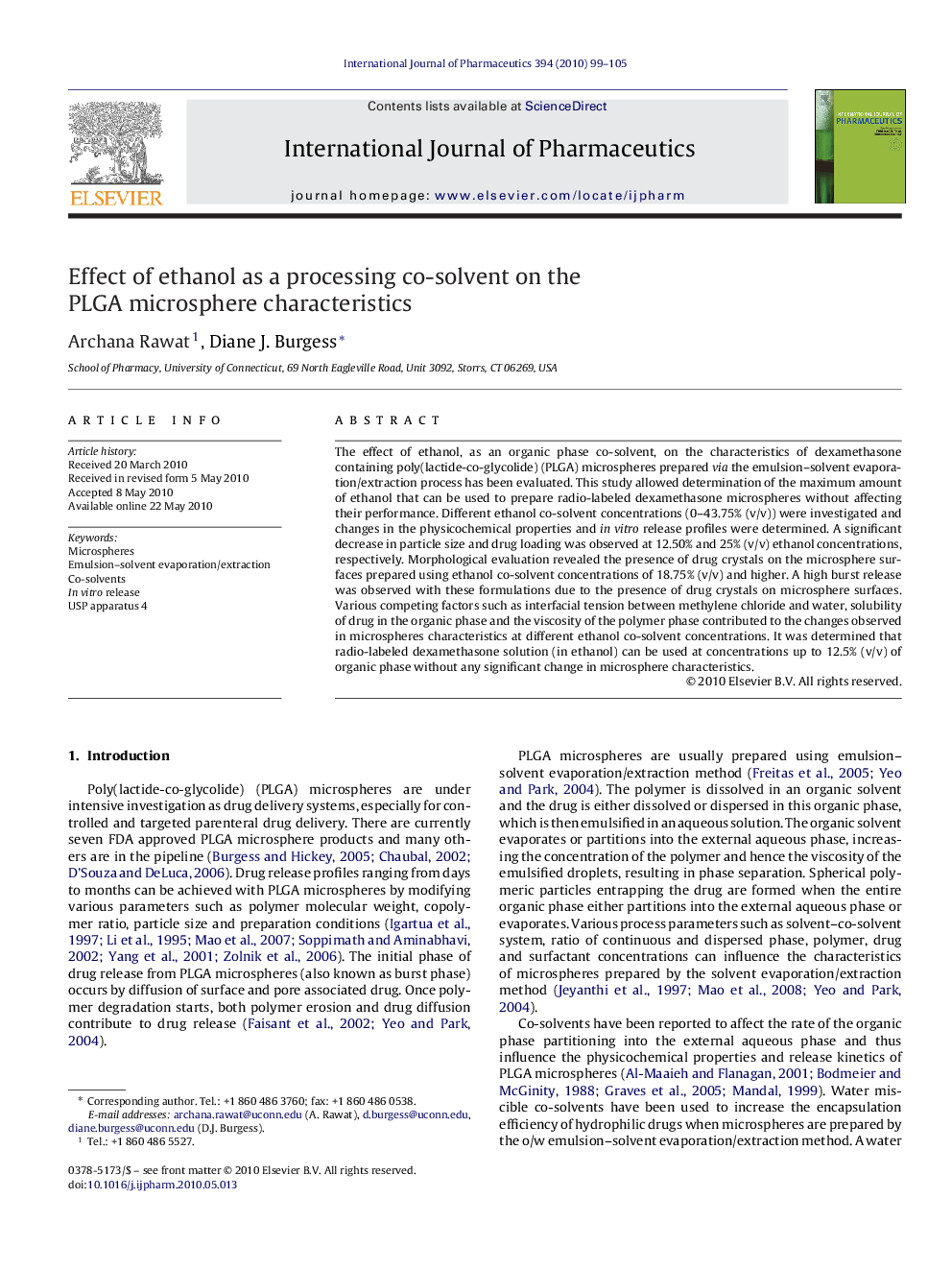| Article ID | Journal | Published Year | Pages | File Type |
|---|---|---|---|---|
| 2504147 | International Journal of Pharmaceutics | 2010 | 7 Pages |
The effect of ethanol, as an organic phase co-solvent, on the characteristics of dexamethasone containing poly(lactide-co-glycolide) (PLGA) microspheres prepared via the emulsion–solvent evaporation/extraction process has been evaluated. This study allowed determination of the maximum amount of ethanol that can be used to prepare radio-labeled dexamethasone microspheres without affecting their performance. Different ethanol co-solvent concentrations (0–43.75% (v/v)) were investigated and changes in the physicochemical properties and in vitro release profiles were determined. A significant decrease in particle size and drug loading was observed at 12.50% and 25% (v/v) ethanol concentrations, respectively. Morphological evaluation revealed the presence of drug crystals on the microsphere surfaces prepared using ethanol co-solvent concentrations of 18.75% (v/v) and higher. A high burst release was observed with these formulations due to the presence of drug crystals on microsphere surfaces. Various competing factors such as interfacial tension between methylene chloride and water, solubility of drug in the organic phase and the viscosity of the polymer phase contributed to the changes observed in microspheres characteristics at different ethanol co-solvent concentrations. It was determined that radio-labeled dexamethasone solution (in ethanol) can be used at concentrations up to 12.5% (v/v) of organic phase without any significant change in microsphere characteristics.
